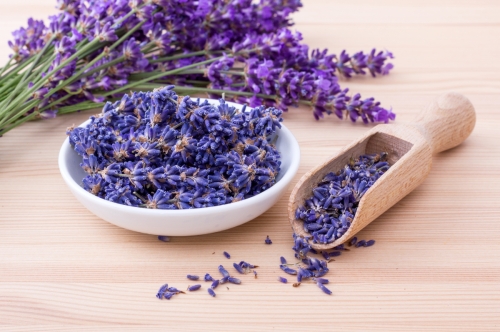A Guide to Different Types of Flavors in Food

Flavour plays a vital role in the culinary world, as it enhances our dining experiences and brings excitement to our taste buds. Whether we're savouring a hearty meal or indulging in a delectable dessert, the types of flavours present in our food greatly influence our enjoyment. In this article, we will delve into the different types of flavours found in food, discuss the importance of flavour in culinary creations, explore natural food flavours, and examine the application of flavours in the food industry.
The Importance of Flavour in Food
The flavour is a fundamental aspect of our eating experience. It stimulates our senses, triggers memories, and influences our overall enjoyment of food. The taste sensations we experience can evoke emotions and create lasting impressions. Chefs and food manufacturers understand the significance of flavour and use it to captivate our palates, ensuring that our meals are memorable and enjoyable.
Natural Food Flavours
Natural food flavours are derived from real ingredients found in nature, such as herbs, spices, fruits, and vegetables. These flavours offer an authentic and pure taste, often enhancing the overall quality of a dish. From the aromatic fragrance of fresh herbs to the tangy sweetness of ripe fruits, natural food flavours provide a delightful sensory experience and are increasingly favoured by health-conscious consumers.
Culinary Tastes and Flavor Categories
The world of flavors can be categorized into various taste sensations. The primary tastes—sweet, sour, salty, bitter, and umami—form the foundation of flavour profiles. Each taste brings its own unique qualities to a dish, creating a harmonious balance when combined thoughtfully. By understanding these taste sensations, chefs and food professionals can create well-rounded flavor profiles that tantalize our taste buds.
Exploring Flavor Profiles: Types of flavours in food
Flavor profiles refer to the overall combination and intensity of different tastes and aromas within a dish. From the rich and robust flavors of a savory stew to the delicate and nuanced notes in a gourmet dessert, flavor profiles offer a diverse range of experiences. Chefs experiment with complementary and contrasting flavors, ensuring a symphony of taste that excites and pleases the palate.
Application of Flavors in the Food Industry
The food industry extensively uses flavors to enhance the taste and appeal of a wide range of products. Whether it's in snacks, beverages, sauces, or frozen meals, flavors play a pivotal role in creating enjoyable and consistent taste experiences. Food manufacturers carefully formulate flavor combinations to meet consumer preferences and provide innovative products that cater to diverse culinary preferences.
Commonly Used Flavours in Food
Flavours play a crucial role in the culinary world, adding depth, aroma, and taste to various dishes. From sweet to savory, there is a wide range of commonly used flavors that contribute to the deliciousness of our favorite foods. Here are some of the most popular flavours found in different cuisines:
Vanilla
Known for its sweet and comforting aroma, vanilla is one of the most widely used flavors in baking and desserts. It adds a rich, creamy, and slightly floral taste to cakes, cookies, ice creams, and custards. Vanilla extract or vanilla beans are commonly used to infuse this flavor into recipes.
Garlic
Garlic is a pungent and savory flavor used in a variety of cuisines around the world. It adds a distinctive taste to savory dishes such as pasta sauces, stir-fries, soups, and marinades. Whether minced, crushed, or roasted, garlic provides a robust and aromatic flavor that enhances the overall taste of a dish.
Lemon
Lemon offers a refreshing and tangy flavor that brightens up many dishes. Its citrusy taste adds a zesty kick to seafood, salads, dressings, and desserts. Lemon zest, juice, or lemon extract are commonly used to infuse this flavor into both sweet and savory recipes.
Cinnamon
Cinnamon is a warm and aromatic spice widely used in both sweet and savory dishes. It imparts a sweet and slightly spicy flavor to baked goods like cakes, cookies, and pastries. In savory dishes, cinnamon is often used in spice blends for curries, stews, and tagines, adding a unique depth of flavor.
Chilli
Chilli peppers offer a fiery and spicy flavor that is popular in many cuisines, particularly in Mexican, Thai, and Indian dishes. They can be used in various forms such as fresh, dried, or ground to add heat and complexity to salsas, sauces, marinades, and chili-based dishes.
Basil
Basil is an aromatic herb with a sweet and slightly peppery flavor. It is widely used in Italian cuisine, especially in tomato-based sauces, pesto, salads, and pizzas. The fresh leaves of basil add a distinctive and vibrant taste to dishes.
Chocolate
Chocolate is a beloved flavor used in desserts, confectionery, and even savory dishes. It provides a rich, sweet, and sometimes slightly bitter taste. From cakes and cookies to ice creams and hot beverages, chocolate is a versatile flavor that is cherished worldwide.
Mint
Mint offers a cool and refreshing flavor, making it popular in both sweet and savory dishes. It is commonly used in desserts like ice creams, chocolates, and candies, as well as in beverages like mint tea and cocktails. In savory dishes, mint is often paired with lamb, salads, and sauces to add a fresh and herbaceous taste.
Onion
Onion is a staple flavor in numerous cuisines, providing a savory and slightly sweet taste. It forms the base of many recipes, such as soups, stews, sauces, and sautés. Whether caramelized, sautéed, or used in powdered form, onions add depth and complexity to a wide range of dishes.
Coffee
Coffee is not only enjoyed as a beverage but also used as a flavor in desserts, baked goods, and savory dishes. Its rich, bitter, and slightly acidic taste adds a unique dimension to cakes, chocolates, ice creams, and even marinades for meat.
These are just a few examples of commonly used flavors in food. The culinary world is vast and diverse, offering an extensive range of flavors that cater to different tastes and preferences. Exploring and experimenting with these flavors can lead.
Types of Flavours in Food
There are numerous types of flavours available, catering to various tastes and preferences. Here are some broad categories of flavors:
- Fruity Flavors: These flavours are derived from various fruits and include options like apple, strawberry, orange, banana, pineapple, grape, cherry, and more.
- Citrus Flavors: Citrus flavours encompass the tangy and refreshing tastes of citrus fruits such as lemon, lime, grapefruit, and tangerine.
- Mint Flavors: Mint flavours are known for their cooling sensation and include variations like peppermint, spearmint, wintergreen, and menthol.
- Sweet Flavors: Sweet flavours encompass a wide range of tastes, such as vanilla, caramel, honey, chocolate, butterscotch, maple syrup, and sugary desserts.
- Savoury Flavors: These flavours are more common in culinary applications and include options like garlic, onion, barbecue, bacon, cheese, tomato, and various herbs and spices.
- Spicy Flavors: Spicy flavours provide a kick and include tastes such as chilli, jalapeno, habanero, black pepper, curry, and hot sauce.
- Nutty Flavors: Nutty flavours are reminiscent of nuts like almonds, peanuts, hazelnuts, and pecans, offering a rich and distinct taste.
- Floral Flavors: Derived from flowers, floral flavours can be found in options like rose, lavender, jasmine, hibiscus, and elderflower, providing a unique aromatic experience.
- Herbal Flavors: These flavours stem from herbs and include tastes like mint, basil, thyme, oregano, sage, and cilantro.
- Beverage Flavors: Inspired by various drinks, beverage flavours range from coffee, tea, and cola to cocktails like mojitos, margaritas, piña colada, and more.
What are Flavour Enhancers?
Flavour enhancers are substances or ingredients that are added to food and beverages to intensify or improve the existing flavors. They are not flavors themselves but work to enhance and amplify the taste of the food. Common flavour enhancers include monosodium glutamate (MSG), yeast extracts, hydrolyzed vegetable proteins, and certain spices.
Difference Between Flavours and Enhancers
Flavour refers to the sensory experience we perceive when we taste or smell something. It encompasses the combination of taste, aroma, and other factors that contribute to the overall perception of a food's flavour.
On the other hand, flavour enhancers are additives specifically used to enhance or magnify the existing flavors in a food or beverage. They don't contribute a distinct flavour of their own but work to intensify the taste perception, making the food more flavorful.
In summary, flavour is the overall sensory experience, while flavour enhancers are substances added to enhance the existing flavours, without adding a distinct flavour of their own.
Conclusion
The types of flavors present in our food significantly impact our dining experiences. The importance of flavor in food cannot be overstated, as it adds depth, excitement, and satisfaction to every bite. From natural food flavors derived from the bounties of nature to carefully crafted flavor profiles, the culinary world continues to evolve and delight our taste buds. As we explore the fascinating realm of flavors, we gain a greater appreciation for the intricate and diverse tapestry of taste sensations that make our dining experiences truly memorable.
At Norex WE CREATE TO ENRICH YOUR TASTE, explore the range of flavours at Norex and make your food applications more palatable and authentic.
Frequently Asked Questions
- How many types of flavors are there in food?
There are countless types of flavors in food due to the vast array of ingredients and culinary techniques used in different cuisines around the world. It is difficult to provide an exact number, but the variety of flavours can be categorized into broad groups such as fruity, citrus, sweet, savory, minty, spicy, nutty, floral, herbal, and more. Each category encompasses numerous specific flavours and combinations, making the world of food flavors incredibly diverse and exciting.
2 . Which foods are known for their herbal flavours?
Foods that are known for their herbal flavours include dishes that prominently feature herbs in their preparation. Some examples include:
- Pesto sauce: Made with basil, garlic, pine nuts,
- Mint tea: A popular herbal infusion, mint tea.
- Caprese salad: This Italian salad typically consists of fresh tomatoes, mozzarella cheese, and basil leaves
- Herbed roasted chicken: Roasted chicken seasoned with herbs such as rosemary, thyme, and sage.
- Thai basil stir-fry: Thai cuisine often incorporates Thai basil leaves in stir-fried dishes.
These are just a few examples, and there are numerous other dishes where herbs play a significant role in imparting distinct herbal flavors.
3. Are there any health benefits associated with certain flavors?
Certain flavors like citrus, spices, mint, and herbs can have health benefits due to their natural compounds and nutrients.












